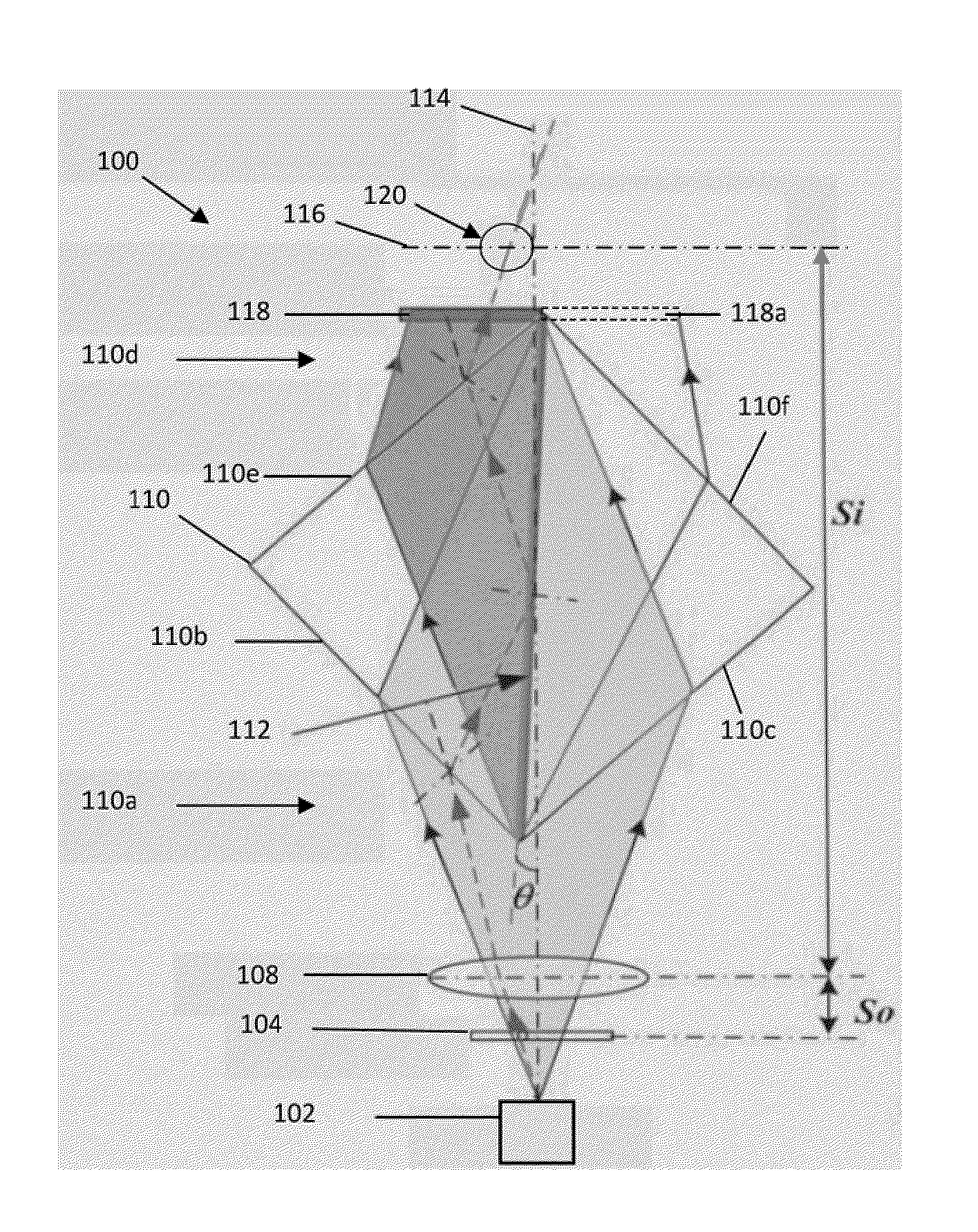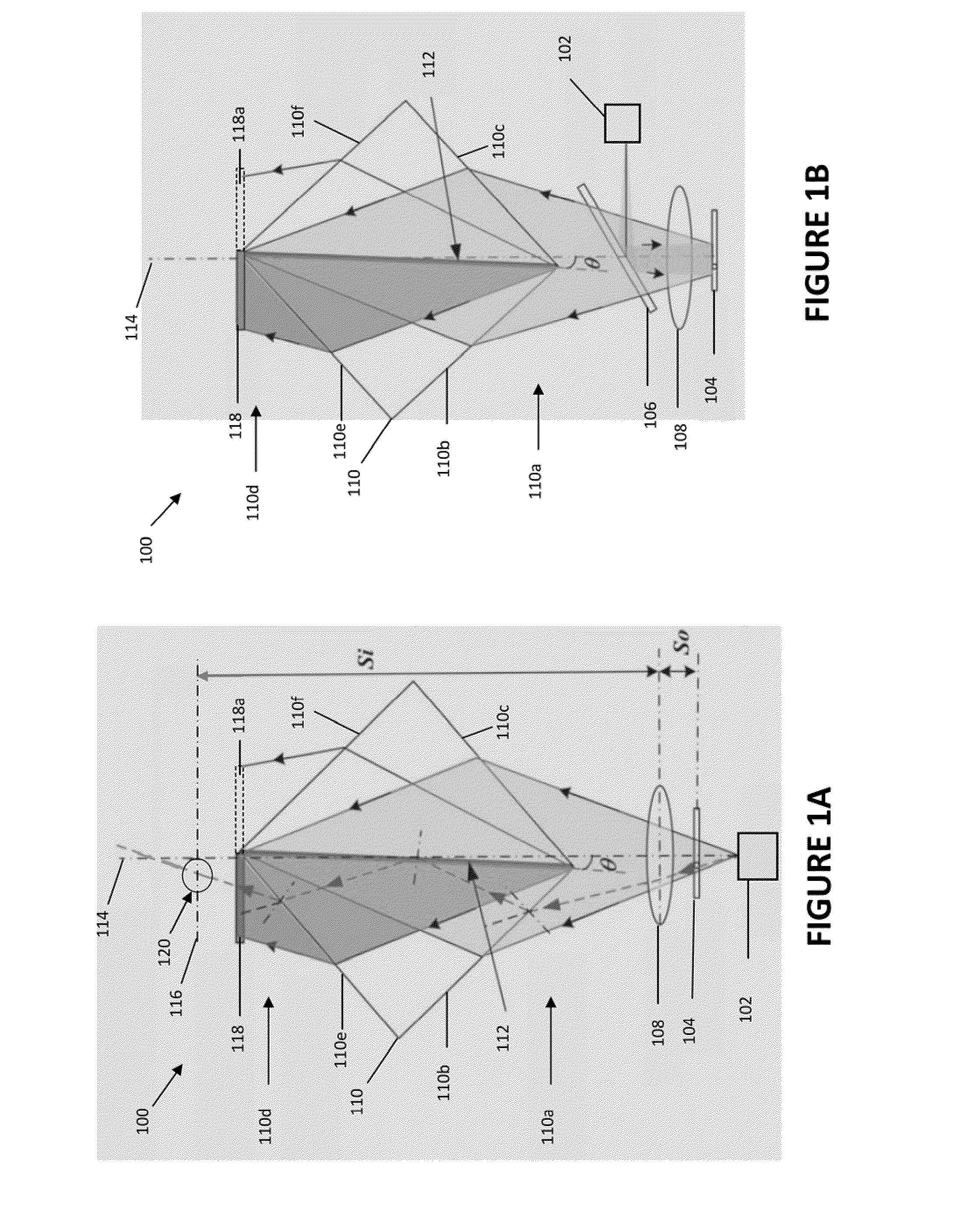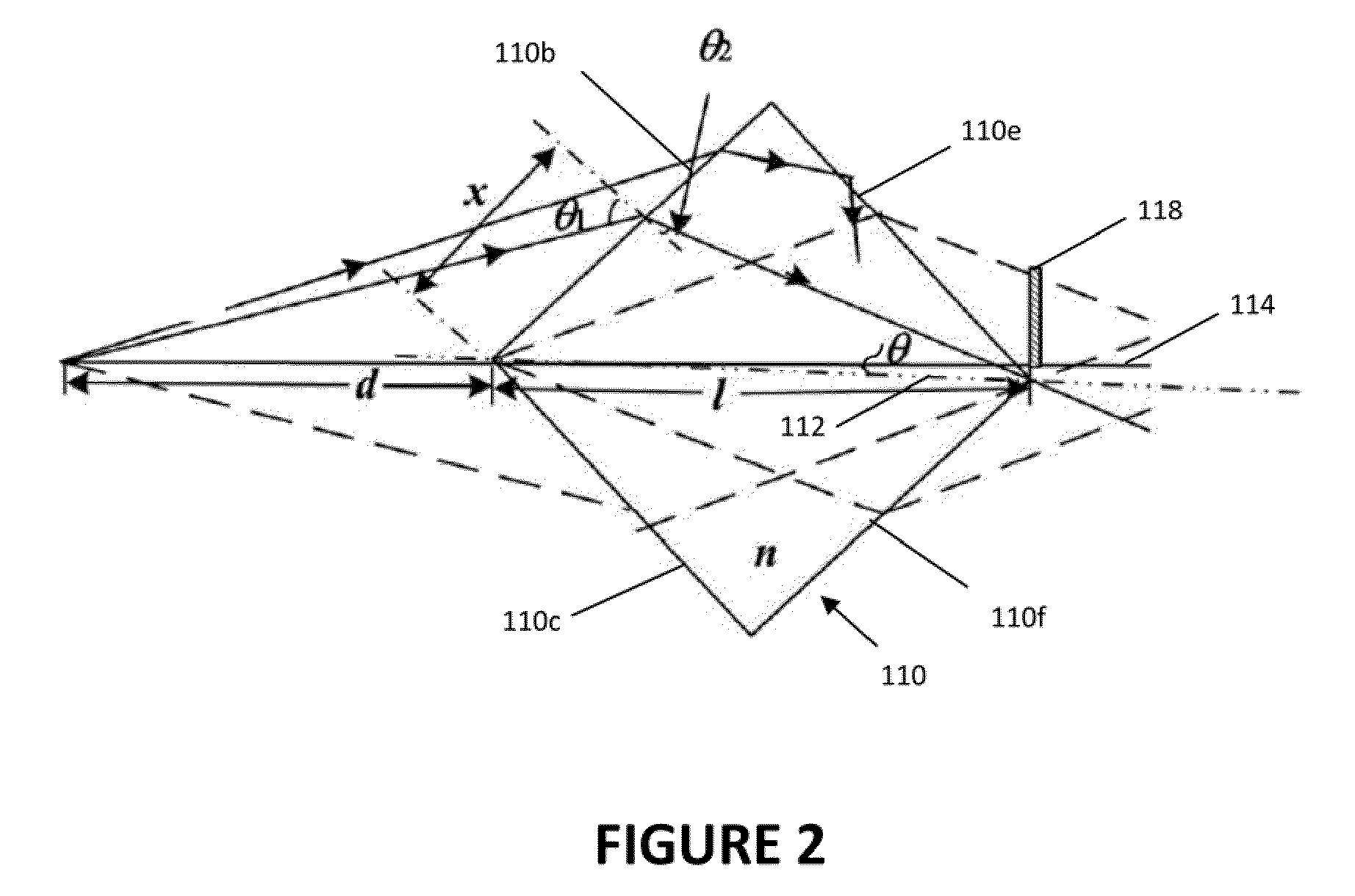Digital holographic microscopy
a holographic microscopy and digital technology, applied in the field of digital holographic microscopy, can solve the problems of distorted reconstruction, complex interference pattern of spaced fringes, complicated reconstruction algorithm, etc., and achieve the effect of reducing the number of optical elements
- Summary
- Abstract
- Description
- Claims
- Application Information
AI Technical Summary
Benefits of technology
Problems solved by technology
Method used
Image
Examples
Embodiment Construction
[0037]Referring to FIGS. 1A and 1B, preferred embodiments of the digital holographic microscope are shown generally as 100. The digital holographic microscope 100 in FIG. 1A is arranged in a transmission mode (where light from a source 102 is transmitted through the object of interest 104), while the digital holographic microscope 100 in FIG. 1B is arranged in a reflection mode (where light from the source 102 is reflected by a beam splitter 106 to the object of interest 104).
[0038]Each digital holographic microscope 100 includes a microscope objective 108 and a beam splitter 110. In the preferred form, the beam splitter 110 is a single cube beam splitter that includes a central semi-reflective layer 112 within outer walls of the cube beam splitter 110. The microscope objective 108 is centred about an optical axis 114, while the semi-reflective layer 112 of the cube beam splitter 110 forms a small non-zero angle θ with the optical axis 114. The angle θ is preferably in the range of ...
PUM
 Login to View More
Login to View More Abstract
Description
Claims
Application Information
 Login to View More
Login to View More - R&D
- Intellectual Property
- Life Sciences
- Materials
- Tech Scout
- Unparalleled Data Quality
- Higher Quality Content
- 60% Fewer Hallucinations
Browse by: Latest US Patents, China's latest patents, Technical Efficacy Thesaurus, Application Domain, Technology Topic, Popular Technical Reports.
© 2025 PatSnap. All rights reserved.Legal|Privacy policy|Modern Slavery Act Transparency Statement|Sitemap|About US| Contact US: help@patsnap.com



